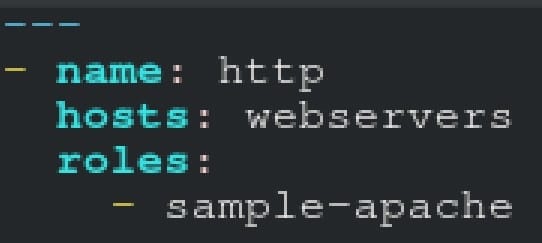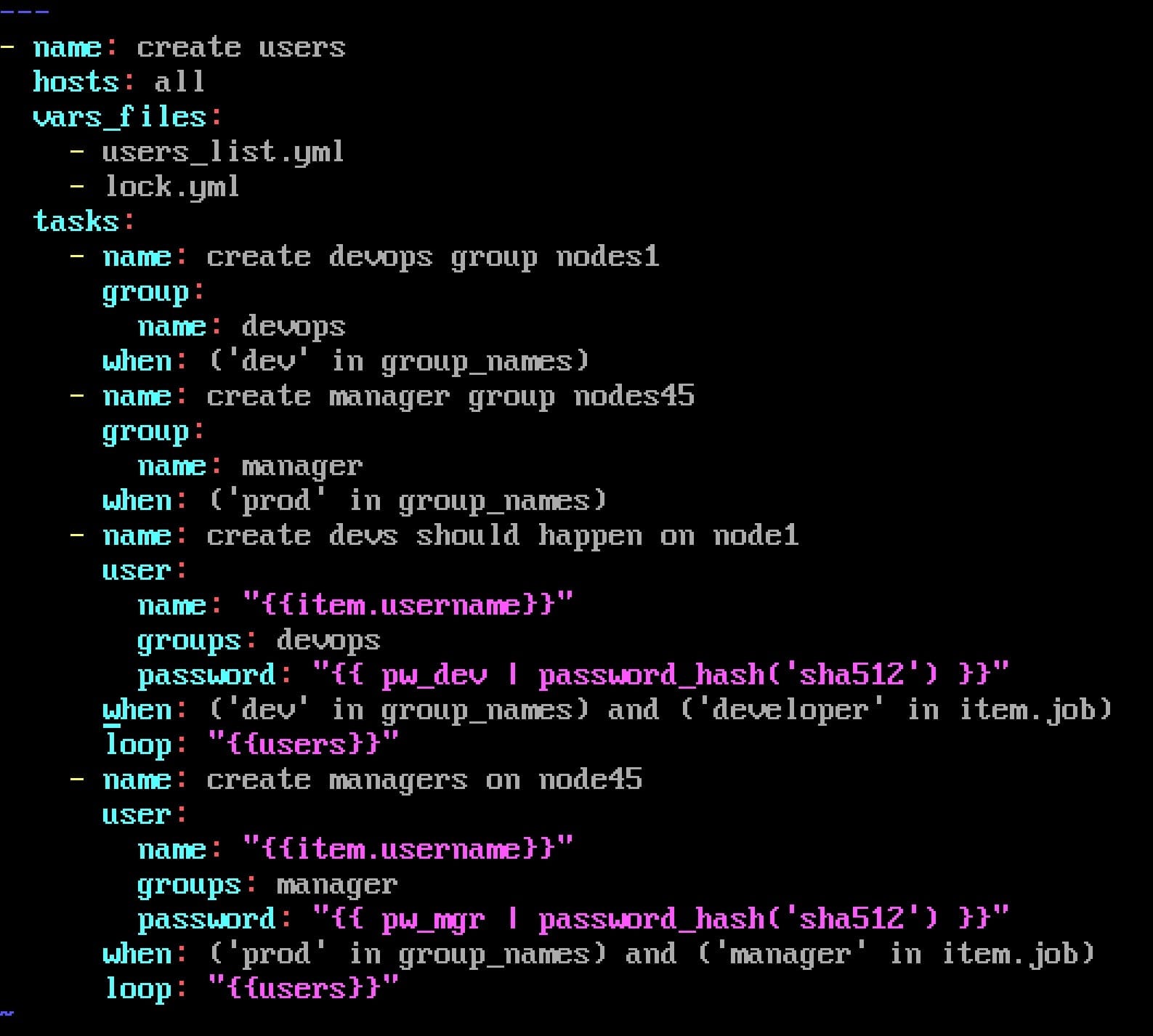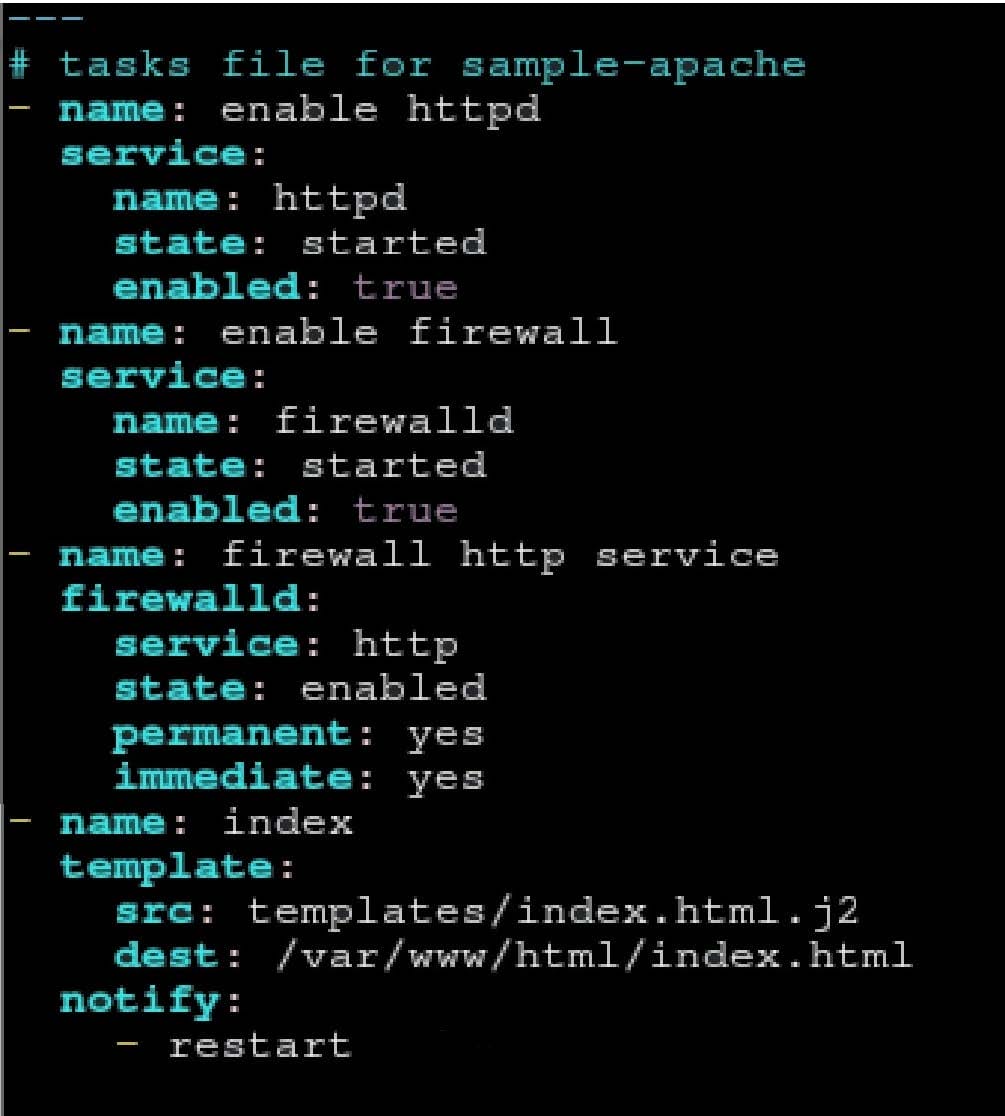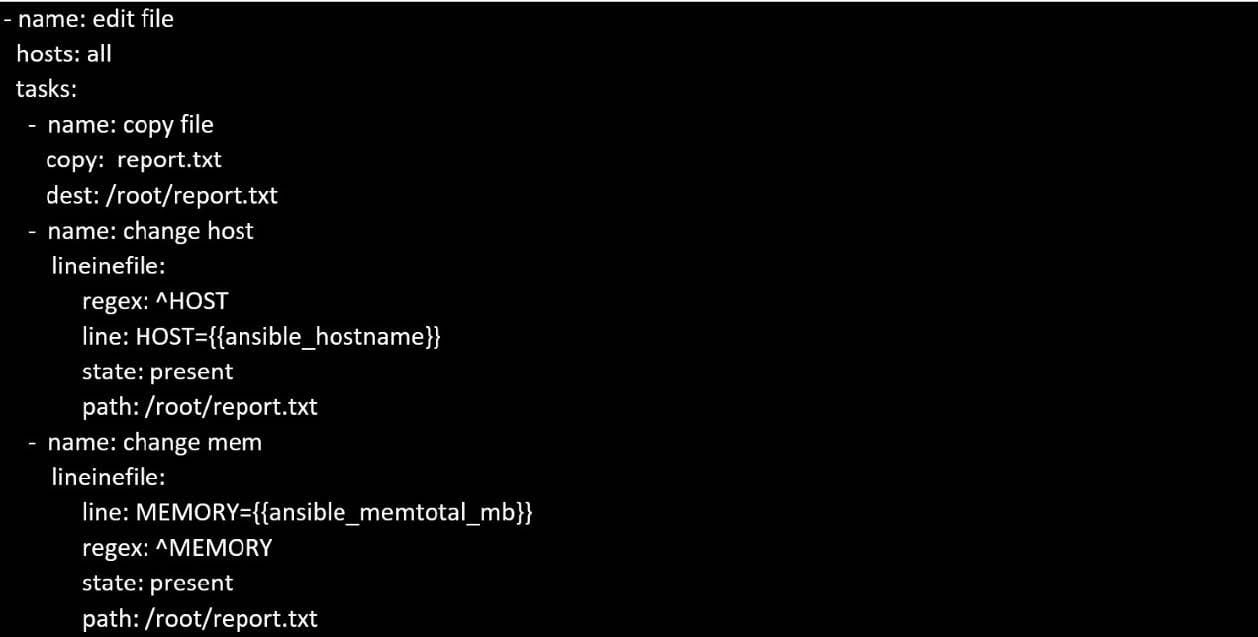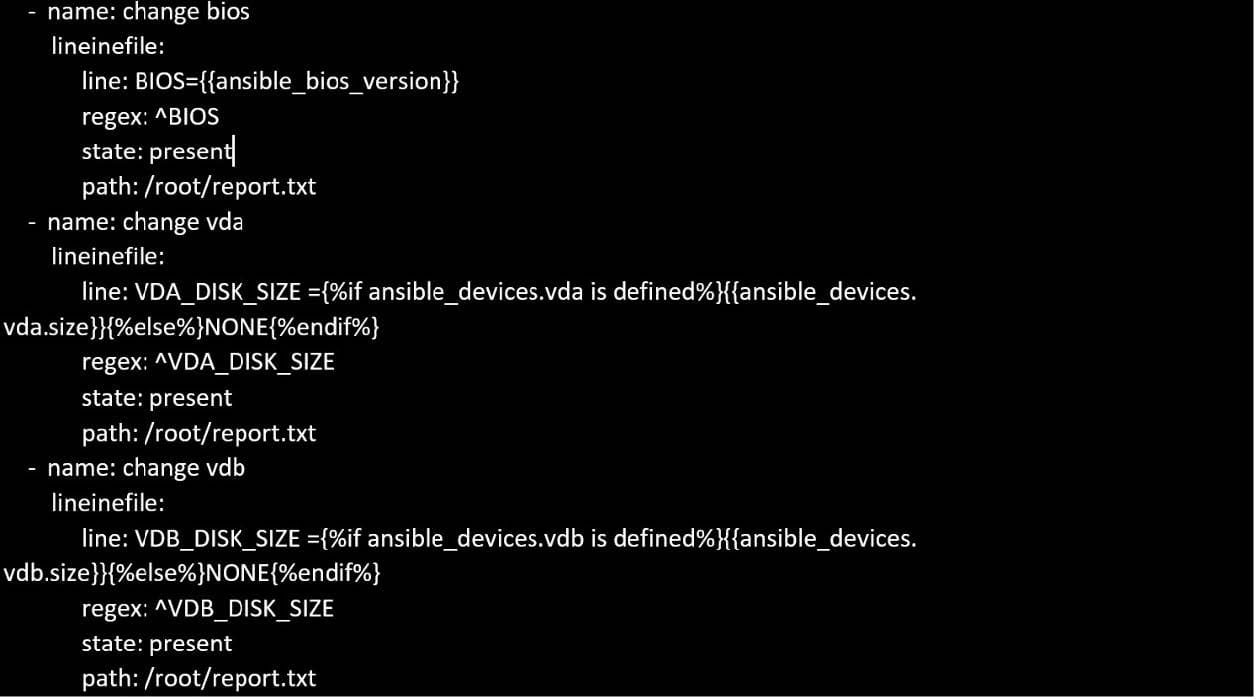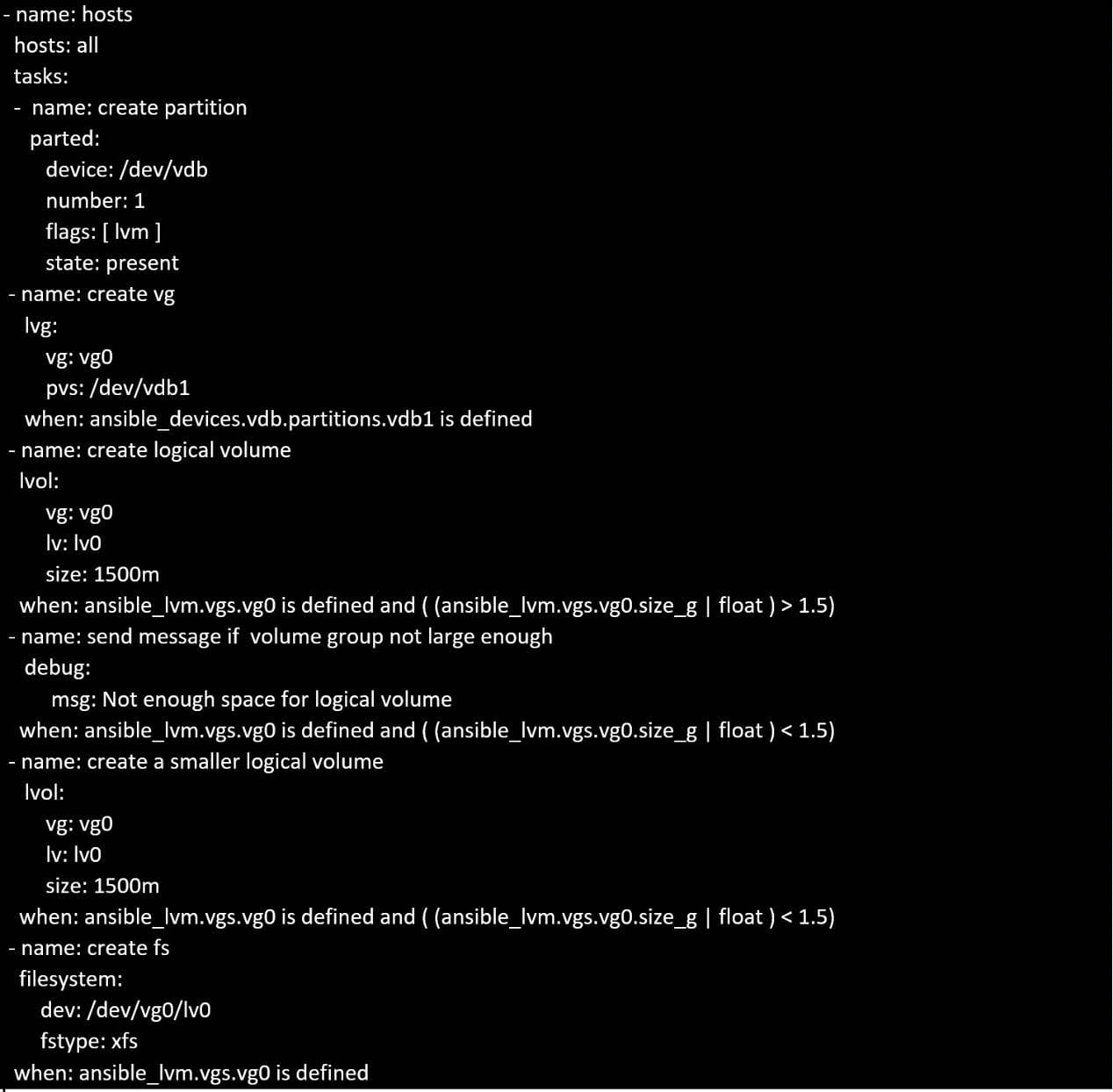EX447 Online Practice Questions and Answers
CORRECT TEXT
Create a file calledadhoc.shin/home/sandy/ansiblewhich will use adhoc commands to set up anew repository. The name of the repo will be 'EPEL' the description 'RHEL8' the baseurl is'https://dl.fedoraproject.org/pub/epel/epel-release-latest8.noarch.rmp'there is no gpgcheck, but you should enable the repo.
*
You should be able to use an bash script using adhoc commands to enable repos. Depending on your lab setup, you may need to make this repo "state=absent" after you pass this task.
A.
See the for complete Solution below.
CORRECT TEXT
Create an empty encrypted file calledmyvault.yml in /home/sandy/ansibleand set the passwordtonotsafepw. Rekey the passwordtoiwejfj2221.
A. See the for complete Solution below.
CORRECT TEXT
Create a playbook calledwebdev.ymlin'home/sandy/ansible. The playbook will create a directory Avcbdev on dev host. The permission of the directory are 2755 and owner is webdev. Create a symbolic link from/Webdevto /var/www/html/ webdev. Serve a file from Avebdev7index.html which displays the text "Development" Curlhttp://node1.example.com/webdev/index.htmlto test
A. See the for complete Solution below.
CORRECT TEXT
Create a playbook /home/bob /ansible/motd.yml that runs on all inventory hosts and docs the following: The playbook should replaee any existing content of/etc/motd in the following text. Use ansible facts to display the FQDN of each host
On hosts in the dev host group the line should be "Welcome to Dev Server FQDN".
On hosts in the webserver host group the line should be "Welcome to Apache Server FQDN".
On hosts in the database host group the line should be "Welcome to MySQL Server FQDN".
A. See the for complete Solution below.
CORRECT TEXT Create an ansible vault password file calledlock.ymlwith the passwordreallysafepwin the /home/sandy/ansibledirectory. In the lock.yml file define two variables. One ispw_devand the password is 'dev' and the other ispw_mgrand the password is 'mgr' Create a regular file calledsecret.txtwhich contains the password for lock.yml.
A. See the for complete Solution below.
CORRECT TEXT
Create the users in the fileusersjist.ymlfile provided. Do this in a playbook called users.yml located at/home/sandy/ansible.The passwords for these users should be set using thelock.ymlfile from TASK7. When running the playbook, the lock.yml file should be unlocked withsecret.txtfile from TASK 7.
All users with the job of 'developer' should be created on thedevhosts, add them to the group devops, their password should be set using thepw_devvariable. Likewise create users with the job of 'manager' on theproxyhost and add the users to the group 'managers', their password should be set using thepw_mgrvariable.

A. See the for complete Solution below.
CORRECT TEXT
Create a playbook /home/bob/ansible/timesync.yml that runs on hosts in the webservers host group and does the following:
Uses thetimesync RHEL system role. Sets the ntp server to 0.uk.pool.ntp.org Sets the timezone to UTC
A. See the for complete Solution below.
CORRECT TEXT
Create a file calledrequirements.ymlin/home/sandy/ansible/rolesa file calledrole.yml in /home/sandy/ansible/.Thehaproxy-roleshould be used on theproxyhost. And when you curlhttp://node3.example.comit should display "Welcome tonode4.example.com" and when you curl again "Welcome tonode5.example.com" Thephp-roleshould be used on theprod host.
A. See the for complete Solution below.
CORRECT TEXT
Create a playbook called regulartasks.yml which has the system that append the date to /root/datefile every day at noon. Name is job 'datejob'
A. See the for complete Solution below.
CORRECT TEXT
Create a role called sample-apache and store it in /home/bob/ansible/roles. The role should
satisfy the following requirements:
In the role, install and enable httpd. Also enable the firewall to allow http. Also run the template
index.html.j2 and make sure this runs Create a template index.html.j2that displays "Welcome to the server HOSTNAME"
In a play called apache.yml in /home/bob/ansible/ run the sample-apache role.
A. See the for complete Solution below.
CORRECT TEXT
Create a playbook called issue.yml in /home/sandy/ansible which changes the file /etc/issue on all managed nodes: If host is a member of (lev then write "Development" If host is a member oftestthen write "Test" If host is a member ofprodthen write "Production"
A. See the for complete Solution below.
CORRECT TEXT
Create a file in/home/sandy/ansible/calledreport.yml.Using this playbook, get a filecalled report.txt(make it look exactly as below). Copy this file over to all remote hosts at /root/report.txt.Then edit the lines in the file to provide the real informationofthehosts. Ifa disk does not exist then write NONE.

A. See the for complete Solution below.
CORRECT TEXT
In /home/sandy/ansible/create a playbook calledlogvol.yml. Inthe play create a logical volume calledIv0and make it of size 1500MiB on volume groupvgOIf there is not enough space in the volume groupprinta message"Not enough space for logical volume"and then make a 800MiBIv0instead. If the volume group still doesn't exist, create a message "Volume group doesn't exist"Create anxfsfilesystem on allIv0logical volumes. Don't mount the logical volume.
A. See the for complete Solution below.
CORRECT TEXT
Install and configure ansible
User sandy has been created on your control node with the appropriate permissions already, do not change or modify ssh keys. Install the necessary packages to run ansible on the control node. Configure ansible.cfg to be in folder /home/ sandy/ansible/ansible.cfg and configure to access remote machines via the sandy user. All roles should be in the path /home/sandy/ansible/roles. The inventory path should be in /home/sandy/ansible/invenlory.
You will have access to 5 nodes. node1.example.com
node2.example.com
node3.example.com
node4.example.com
node5.example.com
Configure these nodes to be in an inventory file where node I is a member of group dev. nodc2 is a member of group test, node3 is a member of group proxy, nodc4 and node 5 are members of group prod. Also, prod is a member of group webservers.
A. See the for complete Solution below.
CORRECT TEXT
Using the Simulation Program,perform the following tasks:
1.
Use an ansible ad-hoc command, check the connectivity of your servers.
2.
Use an ad-hoc ansible command, find the free space of your servers.
3.
Use an ad-hoc ansible command, find out the memory usage of your servers.
4.
Do an ls -l on the targets /var/log/messages file.
5.
Tail the contents of the targets /var/log/messages file.
A. See the for complete Solution below.


